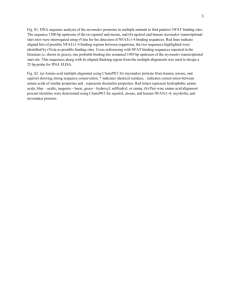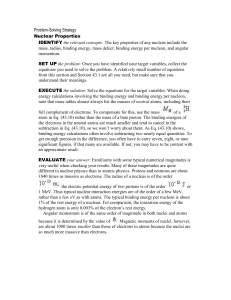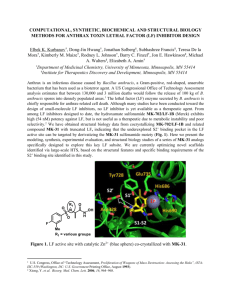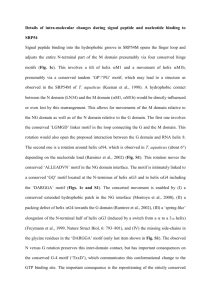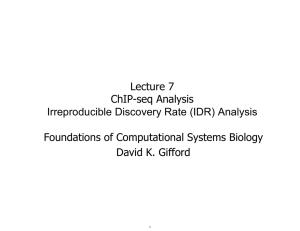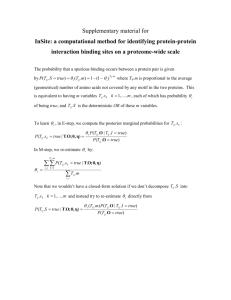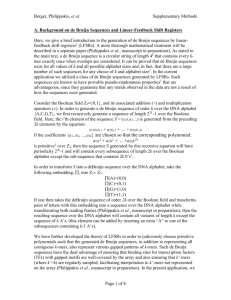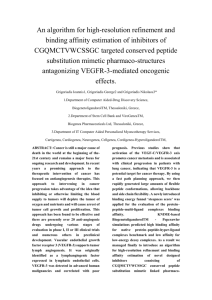file - BioMed Central
advertisement
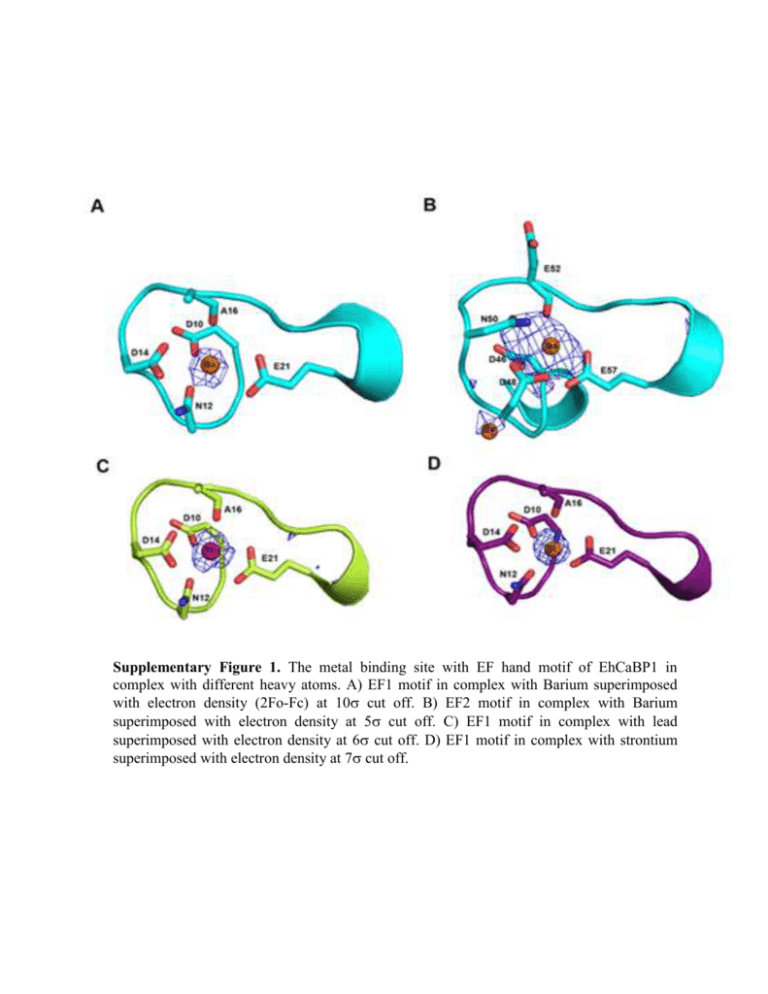
Supplementary Figure 1. The metal binding site with EF hand motif of EhCaBP1 in complex with different heavy atoms. A) EF1 motif in complex with Barium superimposed with electron density (2Fo-Fc) at 10 cut off. B) EF2 motif in complex with Barium superimposed with electron density at 5 cut off. C) EF1 motif in complex with lead superimposed with electron density at 6 cut off. D) EF1 motif in complex with strontium superimposed with electron density at 7 cut off. Isothermal titration calorimetry (ITC): For sequential binding, the binding constants are defined relative to the progress of saturation, such as K1 = [PM]/[P][M] K2 = [PM2]/[PM][M] K3 = [PM3]/[PM2][M] and so on up to total number of sequential binding sites where M denotes metal ion and P denotes the protein molecule [Kishore]. The heat content Q after any ith injection is then expressed as: Q = PtVo[F1ΔH1 + F2(ΔH1 + ΔH2) + ··· + Fn(ΔH1 + ΔH2 + ΔH3 + ··· +ΔHn)] where Fi is the fraction of total macromolecule having i bound ligands and Vo is the active cell volume, whereas ΔH1, ΔH2 and ΔH3 correspond to the enthalpy change associated with the binding of the first, second and third metal to the protein. The pertinent calculated heat effect (ΔQ) for the ith injection is: ΔQ = Q(i) + dVi/Vo [(Q(i) + Q(i – 1))/2] – Q(i – 1) which is then used in the Marquardt minimization algorithm [Bevington, 1969] to obtain best fitting values until constant χ2 values were achieved for the determination of the association constants (Ka values), stoichiometry (n) and enthalpy change (ΔH). Other thermodynamic parameters such as change in free energy (ΔG) and change in entropy (ΔS) were obtained from: ΔG = -RTlnKa and second law of thermodynamics: ΔG = ΔH-TΔS Determination of number of Ca+2, Sr+2 and Ba+2 binding sites in EhCaBP1: To determine the number of metal binding sites on the EhCaBP1 the goodness of fit was determined by calculation of χ2 from: where N is the number of data points, yi the actual value, f(xi) the theoretical value and σi is the measurement error. The data fits were acceptable in each case since the χ2 values were less than the critical values for the appropriate degree of freedom [Frazier, 2006]. In each case of EhCaBP1-metal complex formation the data fit in single, double and sequential binding modes were analyzed to get the lowest value of χ2. From Supplementary figure 1 it is clear that in case of EhCaBP1-Ca and EhCaBP1-Sr, four sequential binding sites are most appropriate because of their lowest χ2 values whereas there are five sites for EhCaBP1-Ba. 10000 One Two Three Four Five Six 8000 χ2/DoF 6000 4000 2000 0 EhCaBP1-Ca EhCaBP1-Sr EhCaBP1-Ba Supplementary Figure 2. The ‘χ2/DoF’ values obtained after the fitting the ITC data to different binding site models (1 to 6 sites) of EhCaBP1- with different metal interactions.



